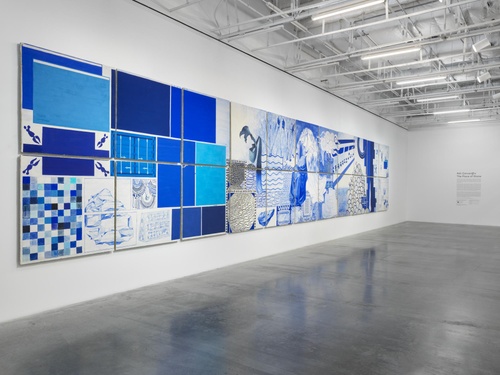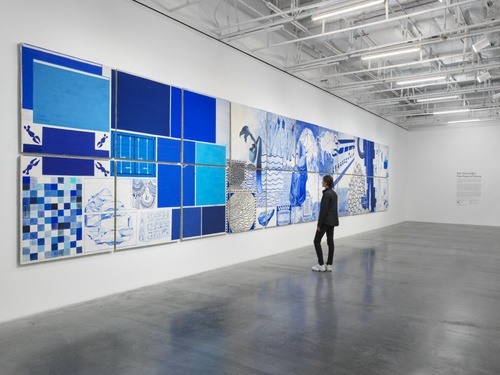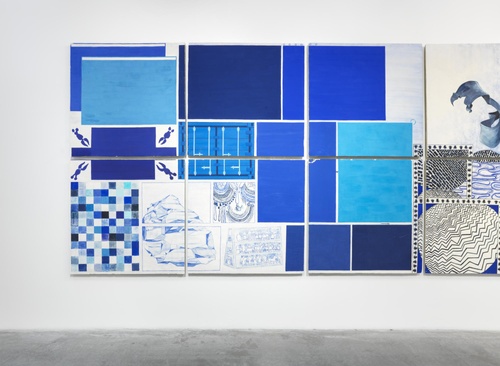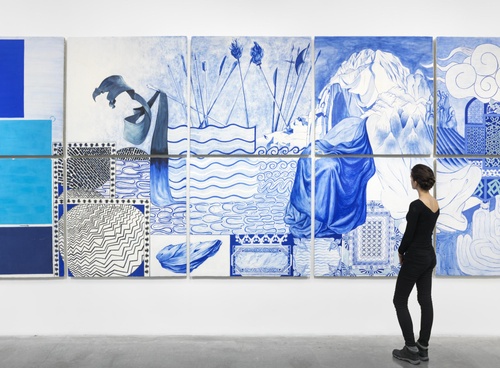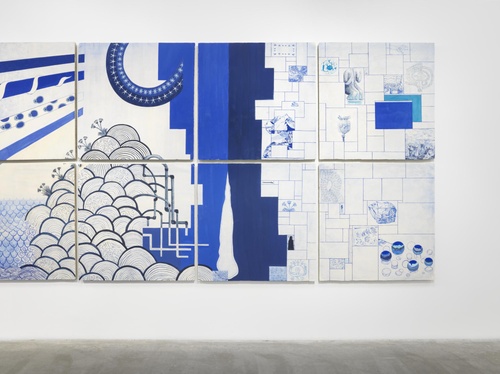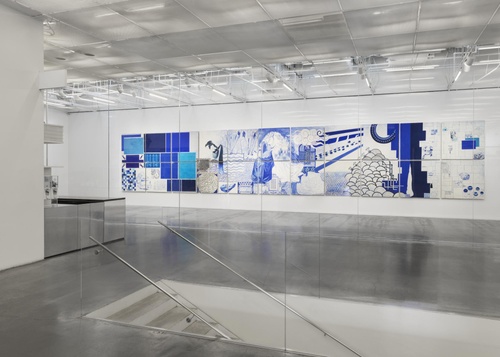Aslı Çavuşoğlu: The Place of Stone
Aslı Çavuşoğlu: The Place of Stone
In her research-driven practice, Aslı Çavuşoğlu takes up questions of history and belief by examining objects, images, and cultural symbols that have endured over time. National identity and the mechanisms through which political projects are constructed are recurring concerns. Many of her works address narratives of the past and suppositions of the present through oral histories, archives, artifacts, and raw materials, such as those used for color pigments.
The artist’s first U.S. solo museum show—part of a partnership with the Istanbul-based SAHA Association, Çavuşoğlu’s New Museum exhibition—debuted The Place of Stone (2018), a mural-like grid of fresco panels painted with ultramarine pigments. To this day, frescoes yield information about lapis lazuli’s trade and distribution, as well as its cultural symbolism. Central to Çavuşoğlu’s project is the role of lapis lazuli in defining the symbolic value of the color blue—once used to designate the heavenly or divine, and now serving as the choice of both institutions and corporations that define themselves as democratic—as well as its current status as a conflict stone mined and sold by the Taliban.
In this new body of work created for the exhibition, Çavuşoğlu expanded her ongoing research into specific colors, exploring the origins of lapis lazuli and the associated cultural histories of the color blue. The work and exhibition borrowed their title from the English translation of Sar-i Sang, the name for the site of lapis mines in Afghanistan where the majority of this semiprecious blue stone has been sourced since the seventh century BC. Spanning the length of the Museum’s Lobby Gallery, Çavuşoğlu’s frescos traced patterns, motifs, and unpopulated landscapes following the color blue across centuries and diverse geographies—from Central Asia to Africa to Europe—and marking its transitions and shifting associations, from the sacred to the political to the emotional.
The exhibition was curated by Associate Curator Natalie Bell, and was accompanied by a catalogue featuring contributions by Bell, artist Mariana Castillo Deball, and independent curator and writer Amy Zion.
Aslı Çavuşoğlu was born in 1982 in Istanbul, Turkey, where she lives and works. Recent solo exhibitions include Mathaf: Arab Museum of Modern Art, Qatar (2016); Market Gallery, Glasgow (2015); ARTER, Istanbul, (2013); and Delfina Foundation, London (2012). Her work has appeared in group exhibitions at Between Bridges, Berlin (2018); Moderna Museet, Stockholm (2017); Castello di Rivoli, Turin (2017); Manifesta 11, Zurich (2016); Van Abbemuseum, Eindhoven, Netherlands (2016); the 14th Istanbul Biennial (2015); New Museum, New York (2015); the 2nd Kyiv Biennial (2015); Witte de With Center for Contemporary Art, Rotterdam (2014); MAK, Vienna (2013); Darat al Funun, Amman (2013); the 11th Baltic Triennial, Vilnius (2012); Institute of Contemporary Arts, London (2012); Frieze Projects, London (2012); and Performa 11, New York (2011). She received the FULL Art Prize in 2012 and was nominated for the 2017 Future Generation Art Prize.

